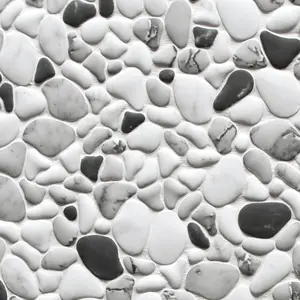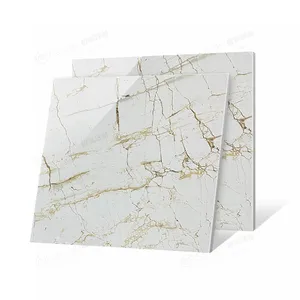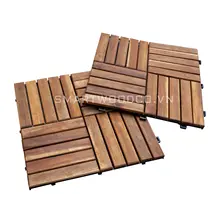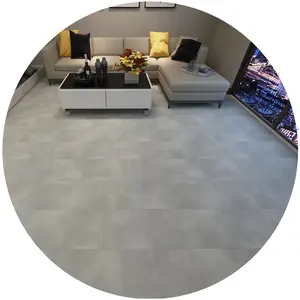Kitchen tiles are typically ceramic or porcelain tiles that are used to cover and decorate the walls and floors of kitchens. Kitchen tiles are popular for their durability, easy maintenance, and resistance to stains and moisture. They are commonly used as backsplashes behind countertops, on kitchen floors, and sometimes even on kitchen walls.
Types of kitchen tiles
Kitchen tiles offer a vast array of types. Ceramic kitchen tiles are a popular choice, known for their affordability, durability, and easy maintenance. They come in various finishes, such as matte or glossy, allowing for diverse design options. Porcelain kitchen tiles, closely related to ceramics, are denser and less porous, making them highly resistant to water and stains—a perfect fit for kitchen floors and countertops. Natural stone kitchen tiles, like marble or slate, bring timeless beauty to the kitchen. While these materials may require more maintenance, their natural variations and unique patterns create a luxurious atmosphere. Glass kitchen tiles, available in various colors and finishes, add a modern and reflective quality. For those seeking an eco-friendly choice, sustainable ceramic kitchen tiles provide environmentally conscious choices. Patterned encaustic tiles, inspired by traditional designs, introduce a sense of artistry and vintage charm to kitchen spaces. Mosaic tiles, crafted from small pieces of glass, ceramic, or stone, allow for intricate patterns and personalized designs. Additionally, peel-and-stick kitchen tiles have gained popularity for their easy installation, making them a convenient choice for DIY enthusiasts.
Maintenance tips for kitchen tiles
Maintaining the pristine appearance of white kitchen tiles involves a combination of regular care and targeted cleaning practices. It's essential to follow some key maintenance tips to ensure longevity and preserve their aesthetic appeal. Regularly sweeping the floor helps prevent dirt from scratching the surface.
For kitchen tiles for walls and kitchen tiles backsplashes, wiping down surfaces with a damp cloth or sponge helps remove grease and spills promptly, preventing stains from setting in. When it comes to kitchen floor tiles, a pH-neutral tile cleaner can be used periodically to eliminate built-up grime without compromising the tile's finish. It's important to avoid abrasive cleaners, as they can scratch the surface over time.
In areas prone to heavy moisture, such as behind the sink or near the stove, applying a quality grout sealer helps protect against water damage and discoloration. Regularly inspecting and repairing any cracked or damaged grout is crucial to prevent water infiltration and maintain the structural integrity of the tiled surface.
In the event of spills, particularly acidic substances like vinegar or tomato sauce, swift cleaning is essential to prevent stains. Lastly, using felt or soft pads under furniture legs can prevent scratches on tiled floors.












































 浙公网安备 33010002000092号
浙公网安备 33010002000092号 浙B2-20120091-4
浙B2-20120091-4